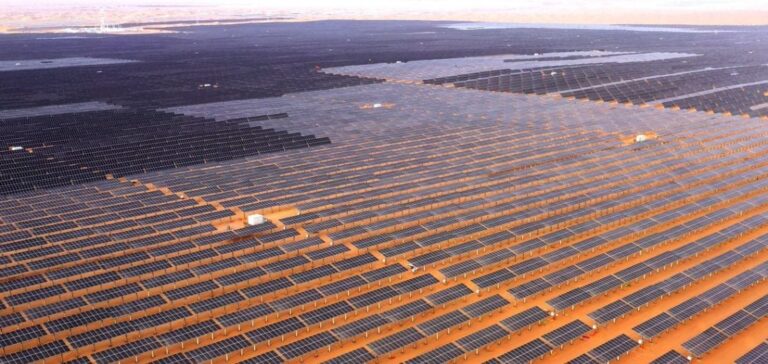In 2024, China achieves its 2030 solar and wind power generation capacity targets, marking a key milestone in its energy strategy.
This achievement is underpinned by massive solar and wind infrastructure, particularly in regions such as Ningxia, where the Tengger Desert is home to large-scale solar installations. The Tengger wind farm, once the largest in the world, has now been overtaken by new projects with even greater capacities.
By 2023, China is increasing its solar capacity by over 55%, contributing almost 40% of the world’s solar production capacity.
This rapid progress is underpinned by industrial policies geared towards increasing renewable capacity and decentralized production through the installation of photovoltaic panels on the roofs of urban areas.
These strategies aim to reduce transmission losses by bringing production closer to consumption centers.
Nevertheless, structural and logistical challenges persist, compromising the effectiveness of this ramp-up.
Coal Dependency and Grid Inefficiencies
Despite these advances in renewables, China continues to rely heavily on coal to meet its growing energy demand.
Coal-fired power plants remain a major component of the energy mix, particularly in industrial regions with high electricity consumption.
This dependence on coal, which is both a reliable and polluting source, complicates efforts to reduce carbon emissions in the short term.
In addition, the rapid development of solar and wind power capacity is highlighting significant inefficiencies in the distribution grid.
Much of the electricity generated in remote regions is not efficiently transmitted to eastern economic centers, resulting in an energy wastage rate of 4% in the first quarter of 2024, according to Fitch Ratings.
Managing this production surplus and optimizing transmission infrastructures remain priorities for the Chinese authorities.
International Competition and Economic Pressures
Internationally, China’s solar industry is under pressure from oversupply of photovoltaic panels, which has led to falling prices and company closures.
The European Union, concerned about perceived market-distorting Chinese state subsidies, launched investigations in 2024 against several Chinese solar players.
In response, Beijing opened investigations into imported European products, increasing trade tensions between the two major economic partners.
These frictions illustrate the complexity of China’s industrial policy in the energy sector, where national renewable development objectives sometimes conflict with global trade dynamics.
Beijing’s strategy must therefore navigate between rapid growth in domestic capacity and maintaining balanced relations with its trading partners, while minimizing negative economic impacts.
At the same time, analysts such as Wu Di of Peking University’s Energy Institute and experts from the Lantau Group warn of persistent grid inefficiencies and the high costs of transporting energy from west to east.
These factors pose challenges to the long-term profitability and sustainability of renewable energy expansion in China.





















